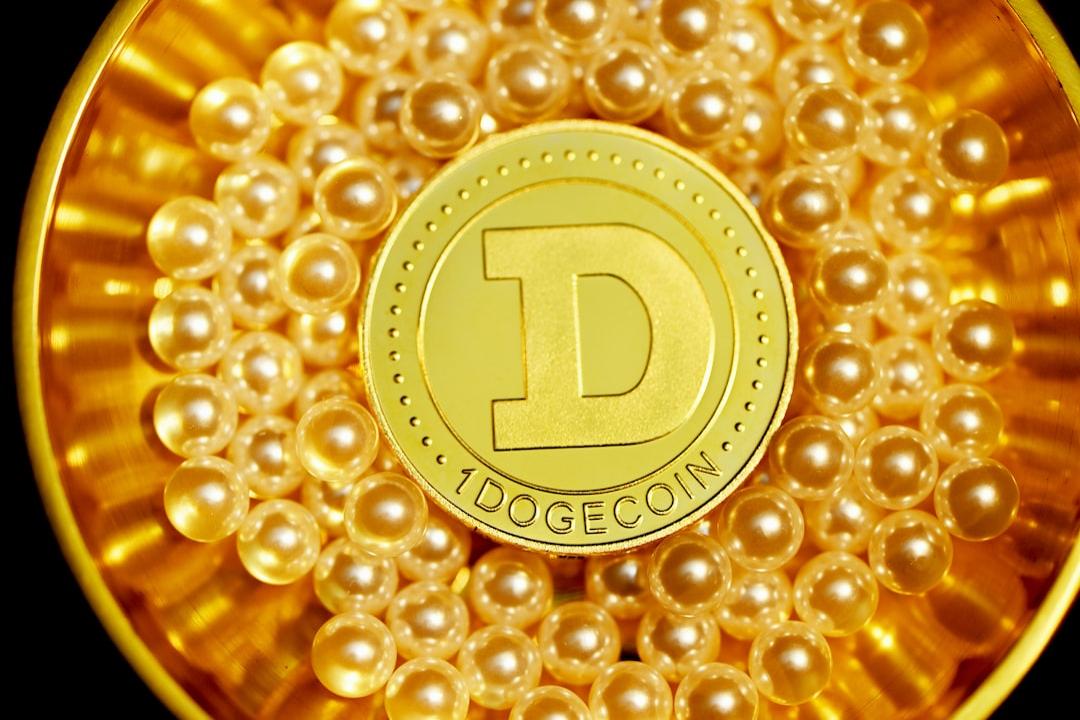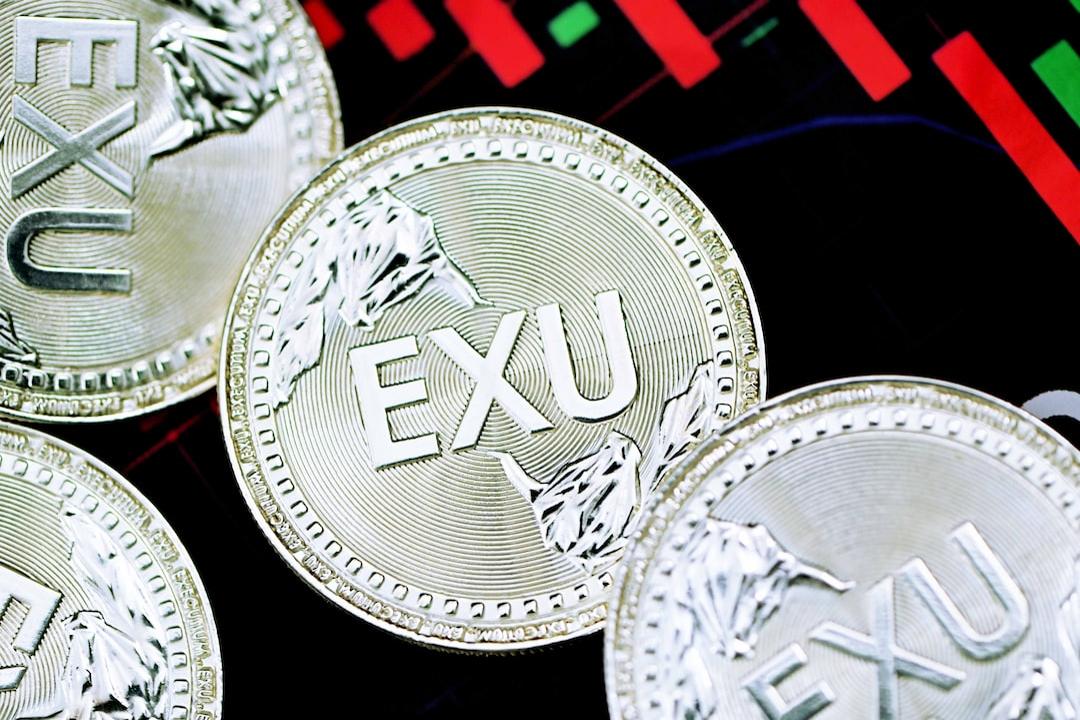Witnessing the Chain Reaction: A New Era of Innovation
If you witness what is happening on-chain, it might feel like the “end of the world” is approaching. It could even be said that artificial intelligence has already replaced cryptocurrency, becoming a breeding ground for future technological developments. All of these statements hold some truth, but it’s best to approach the issue from a broader perspective. This article originates from an article by Saurabh Deshpande, compiled, edited, and written by Felix at PANews.
Background Summary: BTCC Exchange Leads Charitable Innovation: The Red Hawk Foundation’s “Legendary Golf Day” Event Opens Bitcoin Donations for the First Time
Additional Context: OKX Chief Business Officer Lennix: OKX Wallet Focused on Building Self-Custody and Multi-Chain Ecosystem, Balancing Innovation and Compliance
This article explains how the cycle of innovation gradually evolves to achieve a technological-market fit. Today’s story will explore the commonalities between Uber, Pendle, and EigenLayer. Hopefully, it will help dispel the pessimistic narratives on Twitter and provide a new perspective.
For thousands of years, humans believed flight was impossible. In the 112 years since human flight began, we have now figured out how to capture rockets returning from space. Innovation seems to be a gradual transformation that transcends eras.
The true magic of technology is rarely found in its initial invention; it lies in the ecosystem built around it. Think of it as compound growth—only this time, it is innovation, not money.
While the pioneers who create new things grab the headlines and attract venture capital, it is often the second wave of builders who unearth the most value—those who discover untapped potential within existing foundations. They see possibilities that others cannot. History is full of such innovators who never predicted how their inventions would reshape the world. They simply sought to solve the problems in front of them. In the process, they opened up possibilities far beyond their original vision.
The best innovations are not the end goal; they serve as launchpads for entirely new ecosystems. Today’s article will explore how this phenomenon is presented in Web3, starting with the global positioning system (GPS) that we use daily, and then tracing the journey from re-staking and token mechanisms back to the world of cryptocurrency.
A Weekend that Changed the Internet
Since its inception in 1973, the Global Positioning System (GPS) has been dedicated to accurately locating positions on Earth. But Google Maps goes far beyond that, enabling billions of people to access, use, and understand this raw data.
Google Maps began with three strategic acquisitions at the end of 2004. The first was Where 2 Technologies, a small Australian startup working out of a bedroom in Sydney. They developed “Expedition,” a C++ desktop application that achieved smooth navigation through pre-rendered map tiles. Compared to the clumsy experience of MapQuest, its user experience was far superior.
At the same time, Google acquired Keyhole (satellite imagery technology) and ZipDash (real-time traffic analysis), integrating the core components of its mapping vision. These acquisitions formed the foundation of Google Maps: interactive navigation, rich visual data, and dynamic information, all merged into one application.
Expedition was a desktop application, but Larry Page insisted on a web-based solution. Initial attempts made slow progress and lacked innovation. Bret Taylor, a Stanford graduate who served as Google’s Associate Product Manager, was tasked with fixing the problem.
Bret Taylor rewrote the entire front-end using Asynchronous JavaScript and XML (AJAX). AJAX was an emerging technology that allowed websites to update content without reloading the entire page. Before AJAX, web applications were static and clunky. With AJAX, the responsiveness rivaled desktop software. Maps became draggable, and new tiles loaded without refreshing the page—a revolutionary user experience in 2005.

The real genius came when Google released the Map API later that year, transforming the product into a platform. Developers could now embed Google Maps and build on top of it, sparking thousands of “mashup” projects that eventually evolved into full-fledged businesses. Uber, Airbnb, and DoorDash owe their existence to Bret Taylor turning maps into something programmable on that pivotal weekend.
Bret Taylor’s intuition represents a recurring phenomenon in the tech world: the deepest value often does not stem from the foundation itself, but from the outcomes others build upon it. These “second-order effects” represent the true compound magic of innovation—a breakthrough can empower the entire ecosystem, spawning unexpected applications.
Once Google Maps became programmable, it triggered a chain reaction. Airbnb, DoorDash, Uber, and Zomato were the first to integrate GPS into their core services. Pokémon Go took it even further, layering augmented reality technology on top of location data, blurring the lines between the real and the virtual worlds.
What lies behind all this? Of course, payments. Because if seamless payments aren’t possible, what use is on-demand service?
The GPS technology they relied on was nothing new. But simply relying on GPS didn’t create the magic. It was the culmination of decades of technological evolution, such as satellite positioning, mobile hardware, AJAX, APIs, and payment channels—all quietly coming together.
This is why second-order effects are so powerful. They often go unnoticed in the present. But one day, you’ll look up and realize that your everyday tasks are being coordinated by an invisible network of innovations that have accumulated over the years.
How Re-Staking Sparked Product Innovation
In June 2023, EigenLayer introduced the “re-staking” function to the Ethereum mainnet, radically changing the security landscape of Ethereum. The concept is simple but innovative, easily understood by anyone interested in cryptocurrency: “What if you could stake your ETH twice?”
In traditional staking, your ETH can earn a stable but moderate yield of 3.5% to 7%. Re-staking essentially allows the same batch of ETH to serve dual purposes: securing the Ethereum network while simultaneously securing the EigenLayer protocol network—more income from the same funds, improving capital efficiency.
By April 2024, EigenLayer had transformed from a theoretical innovation to a fully operational system, achieving significant adoption. Data says it all: 70% of new Ethereum validators chose to immediately join the protocol. By the end of 2024, over 6.25 million ETH (approximately $19.3 billion) had been locked into re-staking. If ranked by GDP of countries/regions, this would place it around the 120th position.
What’s interesting isn’t just that EigenLayer made re-staking a reality. It’s that others followed suit. EtherFi, a liquidity staking provider, quietly launched at the beginning of 2023.
EtherFi is expected to make EigenLayer’s re-staking one of DeFi’s most popular opportunities. You stake ETH, receive ETH tokens, then automatically re-stake on the feature layer. As a reward, you can use ETH and engage with other DeFi sandboxes. Pendle is one such sandbox. It’s like getting multiple rewards for doing the same thing—crypto finance, folks.
Ether.fi predicts that EigenLayer’s re-staking will become one of the most sought-after opportunities in the DeFi space. You stake ETH, receive eETH tokens, then automatically re-stake on EigenLayer. And as a reward, you can take your eETH to experience other DeFi sandboxes. Pendle is one such sandbox. It’s like everyone getting multiple rewards for essentially doing the same thing.
The results? Quite impressive. By May 2024, Ether.fi’s TVL surged to approximately $6 billion. Their “Liquid Vault” offered an annual yield of around 10%, whereas traditional staking wasn’t as exciting at that time.

Ether.fi’s work with re-staked ETH essentially mirrors what Lido did earlier with staked ETH. By creating liquidity, accessibility, and usability for re-staked ETH, they made re-staking practical, mainstream, and profitable.
Beyond chasing yields, there’s also “point mining,” where users not only pursue immediate rewards but accumulate “points,” which may eventually turn into valuable tokens. If you like, you can call it a speculative flywheel. As more users re-stake via Ether.fi, more eETH tokens circulate and deeply integrate with other DeFi projects like Pendle, where you can trade future earnings or even points themselves, creating entirely new financial instruments out of thin air.
What happened with points? After all, cryptocurrencies are a playground for efficient capital mercenaries. As protocols began using points as rewards, a large number of users emerged, trying to maximize points and manipulating the system in the process. The initial intention behind points was to achieve a fairer, wider distribution of tokens. But once it evolved into a race, the outcomes became skewed. The most active “miners” were not always the most consistent users. While many projects still use points to distribute tokens, this strategy has become less appealing than before.
Thus, as usual, the lesson isn’t just that innovation is important. More crucially, the biggest winners are often not those who create something that excites people from the start. They are the later entrants, who perceive the real situation and create something perfectly timed and precisely right.
Of course, EigenLayer laid the foundation, but companies like Ether.fi, which recognized the second-order effects, also got a piece of the pie, ultimately capturing more than 20% of the Ethereum staking market by mid-2024. In the crypto space, being the first doesn’t matter as much as understanding what others are doing.
Points and Pendle
After the huge success of the Jito airdrop, points became mainstream in December 2023. This Solana-based protocol, which debuted with over $1 billion in FDV, sparked a “gold rush.” Suddenly, all the protocols in the ecosystem shifted from direct token distribution to a point system. They started rewarding users who participated in the protocol with points, which could later be exchanged for governance tokens. This initially new distribution mechanism quickly evolved into a dominant strategy.
Pendle launched in June 2021, focusing on tokenizing and trading future yields. Pendle’s core innovation was quite clever, as it split yield tokens into two parts: principal tokens (PT) representing the underlying asset and yield tokens (YT) capturing future earnings. This separation allowed users to trade these components separately, providing much better control over their yield strategies.

When the point competition officially started, Pendle found itself in a favorable position due to a feature built for entirely different reasons. The platform’s YT tokens created a mechanism equivalent to leveraged point mining. Users could earn both the floating yield of the asset and any related points, thus expanding their point accumulation without additional capital.
Here’s how it works in practice. Let’s say Sid wants to earn points from a protocol like EigenLayer, which rewards liquidity providers. Traditionally, he would need to lock ETH into EigenLayer’s staking contract and lock the funds for several weeks or months. With the combination of liquidity re-staking tokens (LRT) and Pendle, Sid can buy YT tokens representing future earnings and points without directly depositing ETH into EigenLayer.
teETH holders abandon points for fixed returns, while yteETH holders receive floating returns and points. Now, with just $2000, Sid can earn 240 points (worth 10 ETH) daily instead of just 24.

Pendle founder TN Lee provided a detailed analysis of this in a podcast. The team did not build a meta-architecture for the points. They could not have predicted this. However, they built a perfect infrastructure for this emerging behavior and gained substantial capital. Even if this trend eventually cools down and the TVL drops to around $2.5 billion, their market value remains 10-15 times higher than before the points emerged.
Memecoins, Pump.fun, and Raydium
Sometimes, second-order effects emerge from the most unexpected places, revitalizing the entire ecosystem in the process. The revival of Solana in 2023-2024 is a prime example, showcasing the rapid changes in cryptocurrency and how those positioned at critical crossroads can extract value.
After the collapse of FTX at the end of 2022, many industry insiders wrote Solana’s “obituary.” This logic seemed reasonable. SBF and his company had a massive influence on the ecosystem, providing funding, liquidity, and market support. Without them, Solana struggled. The technology was plagued by reliability issues, and the news of “Solana outages” became a joke. The blockchain, once positioned as the “Ethereum killer,” appeared to be on its last legs.
However, an extraordinary transformation was underway. Throughout 2023, Solana’s technology steadily improved. Outages became less frequent, and transaction finality and user experience became noticeably smoother. Developers attracted by Solana’s technical foundation (such as high throughput, low costs, and sub-second finality) began to return, albeit cautiously.
By early 2024, the situation had undergone a decisive turnaround. As disappointment in traditional DeFi governance tokens grew and people broadly turned to the so-called “financial nihilism,” user attention and funds began to flow toward memecoins. These tokens typically have little utility beyond community ownership and cultural signals, yet they captured the market’s imagination. Solana, with its lightning-fast transaction speeds and extremely low fees, provided a perfect environment for this new wave.
PumpFun launched in January 2024. This “memecoin factory” simplified the token creation process (once the domain of developers with programming skills) to just a few minutes. PumpFun democratized token creation in a way that perfectly aligned with the experimental spirit of cryptocurrency finance. Almost overnight, thousands of new tokens, such as “BONK,” “Dogwifhat,” and “POPCAT,” flooded into the Solana ecosystem.
What seemed like frivolous cryptocurrencies quickly demonstrated their potential as catalysts for complex value chains. These new tokens needed something crucial: liquidity. Without trading platforms, even the most clever memecoin concept would be worthless. Solana’s decentralized exchange Raydium found itself in an enviable position.
Since its inception, Raydium has aimed to become the top trading platform for Solana, focusing on improving capital efficiency and reducing slippage. The protocol was not designed specifically for memecoins. However, its technical architecture proved similar to Uniswap’s concentrated liquidity pools and permissionless token listing processes, making it well-suited to handle the sudden influx of new assets.
The timing was perfect. Years of infrastructure development had created a solid foundation for this unexpected use case.

Listing on Raydium became a significant milestone for these emerging tokens, enhancing credibility and visibility in an increasingly crowded market. By early 2025, this symbiotic relationship became crucial, with over 40% of Raydium’s swap revenue coming from tokens generated by PumpFun.
This relationship was mutually beneficial: PumpFun needed Raydium’s existing liquidity pools to elevate its tokens from niche products to tradable assets, while Raydium thrived on the explosive trading volume brought by these tokens.

The economic benefits for the PumpFun team were impressive: tokens traded exclusively on the PumpFun platform charged a 1% transaction fee, while Raydium’s fee structure was 0.25%. This meant that Raydium had to generate four times the trading volume to match PumpFun’s revenue from each token. Due to its deeper liquidity and broader user base, Raydium consistently surpassed this threshold from August 2024 to February 2025.
Raydium was neither the original creator of memecoins nor the pioneer of the token factory concept. However, by providing robust infrastructure for trading these assets and quickly responding to competitive threats, it captured a significant portion of the ecosystem’s value.
The legendary story of Solana memecoins illustrates a key aspect of second-order effects: value often does not accrue to those who create new behaviors, but to those who facilitate, optimize, and scale them on a large scale. PumpFun simplified token creation, while Raydium enabled efficient price discovery and trading. Each innovation spurred further adaptation. PumpFun’s vertical integration initiatives prompted Raydium to establish LaunchLab, generating a series of secondary effects that reshaped the entire ecosystem.
This attention not only revitalized the ecosystem but was actively exploited. As the memecoin craze intensified, tokens like Trump and Libra were likely launched for the hype. Their strategies relied on narrative, timing, and viral spread. Trump leveraged the energy of political memes, while Libra leaned toward broader internet culture. Both tokens initially garnered immense attention and reached absurd valuations shortly after launch.
But this energy did not last long. Attention came quickly and dissipated just as fast. The secondary market cooled down. Traders shifted their focus. Communities gradually diminished. The success of these tokens lay in demonstrating how to capture attention at the right moment and convert it into speculative gold. However, they failed to maintain market value. They had no real utility and no sustainable development roadmap, proving to be fleeting.
Nonetheless, they proved a point: innovation can attract attention. In the realm of cryptocurrency, attention is one of the most powerful raw materials. When harnessed correctly, it can spark new waves; when mishandled, it can quickly fade away.
For observers of cryptocurrency innovation, the lesson is clear. When new primitives emerge, one must not only consider the direct impact but also who is best positioned to facilitate, optimize, and expand the behaviors they support. This is often where the true realization of excess returns lies.
What’s Next?
By this point, you might be wondering what the next second-order explosion will look like. Perhaps you call it composite innovation, or maybe it’s technological convergence, but the essence remains the same. This article discusses the collision of multiple technologies simultaneously, leading to a chain reaction greater than the sum of its parts.
We have witnessed this happen: re-staking reshaped DeFi incentive mechanisms, memecoin infrastructure revitalized the entire ecosystem, and yield protocols unexpectedly realized airdrop leverage. So, what will be the next domino to fall? Perhaps it’s the EVM experience. Maybe. It is indeed being rewritten, redesigned, and refined to feel like real software — at least that’s the promise. Whether it becomes the next great compounding layer or just another incremental upgrade remains to be seen.
However, if these links connect smoothly, it could trigger an unprecedented chain reaction.
Amidst the debate over L2s and the noise of scaling wars, a race is brewing — not just to scale the Ethereum stack but to enhance its utility by improving its usability. Real usability, which enables others to build on top of it without being plagued by wallet, fee, or transaction failure issues. Because when friction disappears, innovation thrives. And when innovation thrives, compounding returns can emerge in the most unexpected places.
In the past few months, we have welcomed some outstanding individuals leading this change: Andre Cronje from Sonic, Keone Hon from Monad, and Shuyao Kong from MegaETH. Despite their differing approaches, their goals are very clear: eliminate latency. Remove friction. Even eliminate wallets. Replace them with something faster, smoother, and more intangible. Create a real software experience rather than a cumbersome clicking process.
MegaETH and Monad both claim to handle 10,000 transactions per second. That’s comparable to Solana’s speed but with Ethereum’s semantics. To note, the cryptocurrency space has long had a tendency towards hyperbole; if realized, this would be the first EVM-based chain to put Solana in a passive position in terms of user experience. (Considering EVM blockchains have long suffered from slow confirmations and hellish wallet pop-ups, this is quite amusing.)
Andre’s emphasis is not purely on speed but on eliminating complexity. He states that Ethereum’s performance ceiling has yet to be reached. He claims its current execution capacity is only about 2% of total capacity. This is not due to hardware limitations but rather the way the Ethereum Virtual Machine (EVM) accesses and writes data. Sonic has already reduced data storage requirements by 98% through its new database architecture. His Sonic development roadmap bets on abstraction — abstracting costs, abstracting accounts, abstracting wallets. If all goes according to plan, by the end of this year, users won’t even realize they are on a blockchain while maintaining a significant degree of decentralization. And that is the key.
So, who will win in this new world? It may not be the infrastructure teams busy rearranging TPS benchmarks but rather the applications built on these infrastructures, like Pumpfun utilizing Solana’s infrastructure to profit $500 million in less than a year. Especially social protocols may achieve breakthroughs. Projects like Farcaster have already demonstrated the potential to combine the permanence of cryptocurrency with the convenience of internet-native solutions. No more paying to post, no more MetaMask pop-ups. Just content sharing.
Then there’s DeFi. Next-generation financial applications will need better inputs. Andre bluntly states, “We don’t have on-chain volatility, implied volatility, or actual volatility.” When these data truly emerge, we expect to see real options markets, coherent derivatives, and properly structured perpetual contracts — the financial layer that cryptocurrency has long pretended to possess.
Perhaps the most exciting applications are those yet to be imagined. Because things always develop this way. In 2005, no one looked at Google Maps and said, “You know what it needs? Ridesharing.” But once the foundation changes, everything built on top will also transform.


